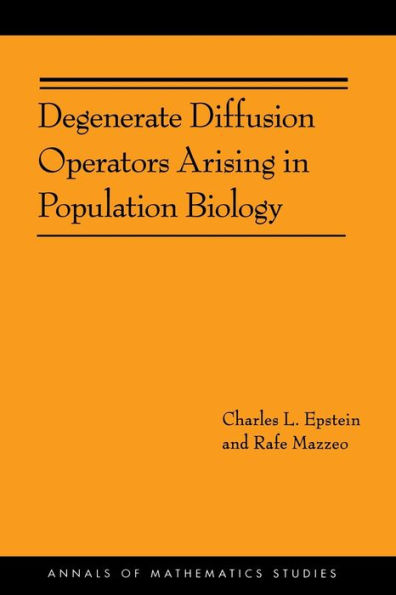Table of Contents
Preface xi
1 Introduction 1
- 1.1 Generalized Kimura Diffusions 3
- 1.2 Model Problems 5
- 1.3 Perturbation Theory 9
- 1.4 Main Results 10
- 1.5 Applications in Probability Theory 13
- 1.6 Alternate Approaches 14
- 1.7 Outline of Text 16
- 1.8 Notational Conventions 20
I Wright-Fisher Geometry and the Maximum Principle 23
2 Wright-Fisher Geometry 25
- 2.1 Polyhedra and Manifolds with Corners 25
- 2.2 Normal Forms and Wright-Fisher Geometry 29
3 Maximum Principles and Uniqueness Theorems 34
- 3.1 Model Problems 34
- 3.2 Kimura Diffusion Operators on Manifolds with Corners 35
- 3.3 Maximum Principles for theHeat Equation 45
II Analysis of Model Problems 49
4 The Model Solution Operators 51
- 4.1 The Model Problemin 1-dimension 51
- 4.2 The Model Problem in Higher Dimensions 54
- 4.3 Holomorphic Extension 59
- 4.4 First Steps Toward Perturbation Theory 62
5 Degenerate Hölder Spaces 64
- 5.1 Standard Hölder Spaces 65
- 5.2 WF-Hölder Spaces in 1-dimension 66
6 Hölder Estimates for the 1-dimensional Model Problems 78
- 6.1 Kernel Estimates for Degenerate Model Problems 80
- 6.2 Hölder Estimates for the 1-dimensional Model Problems 89
- 6.3 Propertiesof the Resolvent Operator 103
7 Hölder Estimates for Higher Dimensional CornerModels 107
- 7.1 The Cauchy Problem 109
- 7.2 The Inhomogeneous Case 122
- 7.3 The Resolvent Operator 135
8 Hölder Estimates for Euclidean Models 137
- 8.1 Hölder Estimates for Solutions in the Euclidean Case 137
- 8.2 1-dimensional Kernel Estimates 139
9 Hölder Estimates for General Models 143
- 9.1 The Cauchy Problem 145
- 9.2 The Inhomogeneous Problem 149
- 9.3 Off-diagonal and Long-time Behavior 166
- 9.4 The Resolvent Operator 169
III Analysis of Generalized Kimura Diffusions 179
10 Existence of Solutions 181
- 10.1 WF-Hölder Spaces on a Manifold with Corners 182
- 10.2 Overview of the Proof 187
- 10.3 The Induction Argument 191
- 10.4 The Boundary Parametrix Construction 194
- 10.5 Solution of the Homogeneous Problem 205
- 10.6 Proof of the Doubling Theorem 208
- 10.7 The Resolvent Operator and C0-Semi-group 209
- 10.8 Higher Order Regularity 211
11 The Resolvent Operator 218
- 11.1 Construction of the Resolvent 220
- 11.2 Holomorphic Semi-groups 229
- 11.3 DiffusionsWhere All Coefficients Have the Same Leading Homogeneity 230
12 The Semi-group on C0(P) 235
- 12.1 The Domain of the Adjoint 237
- 12.2 The Null-space of L 240
- 12.3 Long Time Asymptotics 243
- 12.4 Irregular Solutions of the Inhomogeneous Equation 247
A Proofs of Estimates for the Degenerate 1-d Model 251
- A.1 Basic Kernel Estimates 252
- A.2 First Derivative Estimates 272
- A.3 Second Derivative Estimates 278
- A.4 Off-diagonal and Large-t Behavior 291
Bibliography 301
Index 305



